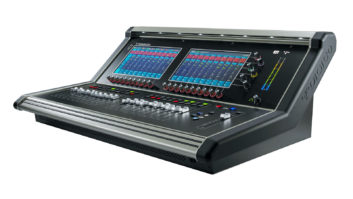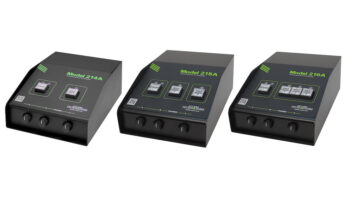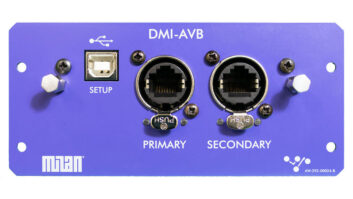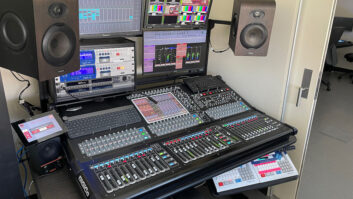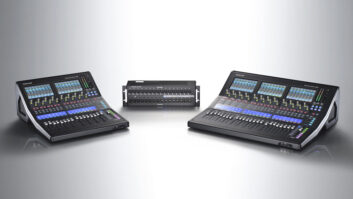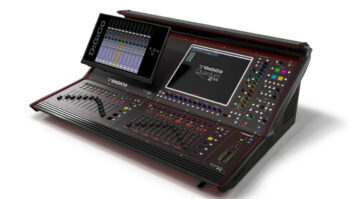DiGiCo is delighted to announce the launch of its new DMI-AMM (Automatic Mic Mixing) card, which allows up to 48 channels of automatic mic mixing on any S-Series console. Designed in direct response to requests from the corporate market, the DMI-AMM will benefit any production where complex vocal mic setups are in use.
Insertable on any input channel, be it local or rack I/O, the DMI-AMM is designed to assist engineers with multiple spoken voices. It is seamlessly incorporated into the console’s user interface, allowing a continuous workflow that does not hinder the operation of the console.
The DMI-AMM system works by automatically managing several live microphones in unpredictable dialogue situations. When one person speaks, that microphone’s gain level fades up instantly, while the other microphone gains are reduced. When the speaker pauses, all microphone levels will adjust to medium gain to collectively match the level of one microphone at full gain. The resulting effect will be as if all speakers are sharing one microphone.
The AMM does this by using the highly regarded “Shared Unity Gain” principle—the most effective and natural sounding method available—which means that when several people speak at once, the gain is shared. A Weighting control allows adjustment of the relative sensitivity of the DMI-AMM on a per channel basis. When weighting controls are balanced (equal), each microphone has an equal opportunity to “take over” the system. A Noise Floor control imposes a lower limit (floor) on the level detector for all associated microphones to prevent a noisy microphone capturing a disproportionate share of gain during quieter moments.
In an S-Series console, the DMI AMM offers 48 channels of processing, which can be used in any console input channel. There are two independent AMMs implemented by the DMI-AMM, known as AMM-A and AMM-B, with channels assigned to either A or B, or neither. This means that two separate events can run simultaneously on the same console without one interfering with the other.
“We studied what was already available on the market and noticed that other implementations varied in quality,” explains DiGiCo DSP and Product Specialist Pete Johnston. “We tested the DMI-AMM at the lowest levels, as well as at very high levels, so the gaps between people speaking would come up with reliable results with no cumulative error when high channel counts were being used. We also made sure that all the control circuitry was running at sample rate so that the beginnings of words wouldn’t be cut in any way. This means that the AMM has a sample accurate response as well as having an extremely fast attack time. Each channel has its own pre-conditioning, which is carefully tuned to deal with both male and female voices alike.”
“Our corporate AV customers have been asking us for a product like this,” says Tim Shaxson, international sales manager at DiGiCo. “The one we have developed is exceptionally easy to use and has benefits for the corporate market and beyond. I can’t wait to let my customers try it out in the real world.”
